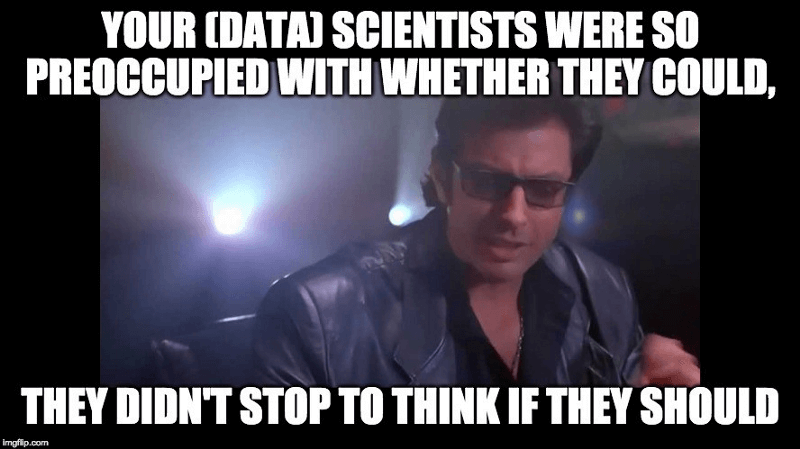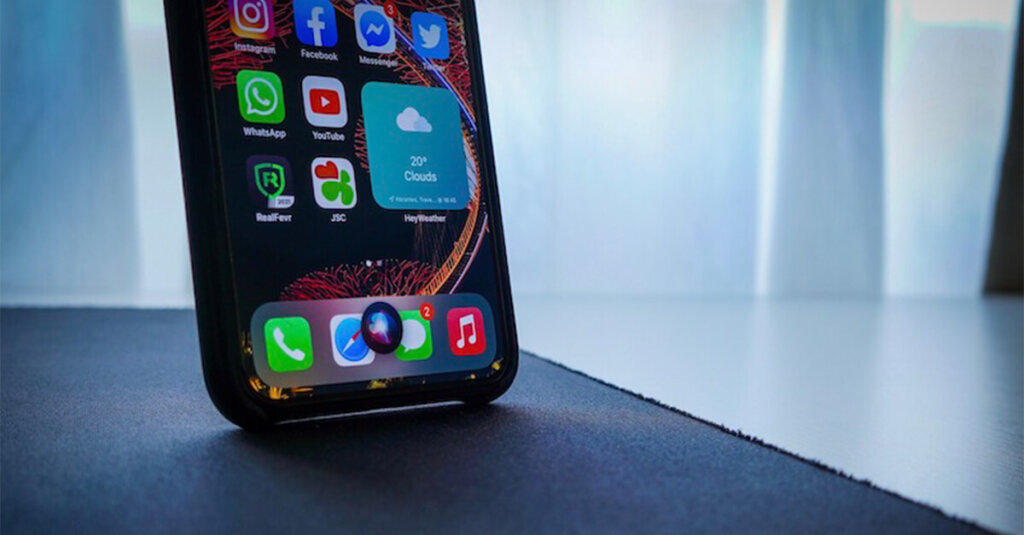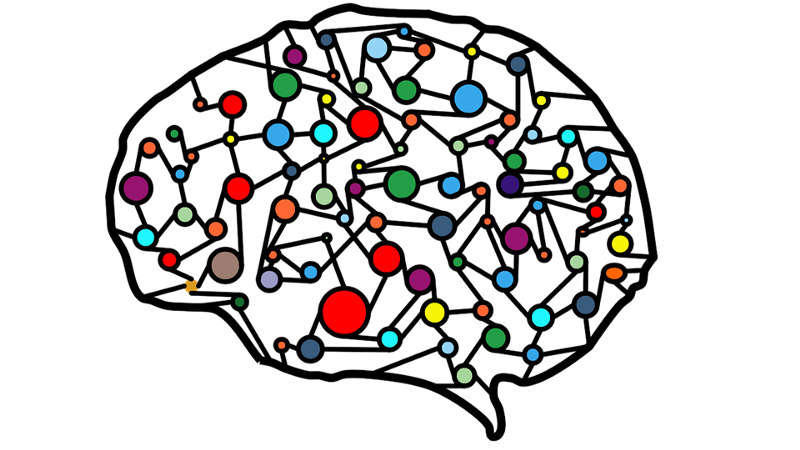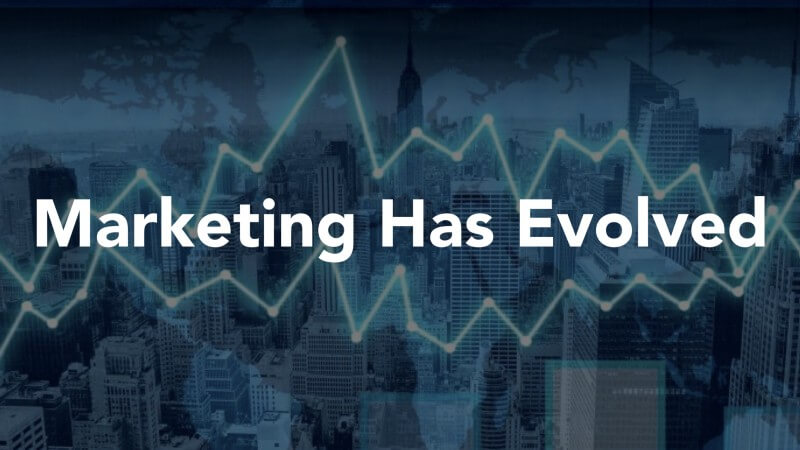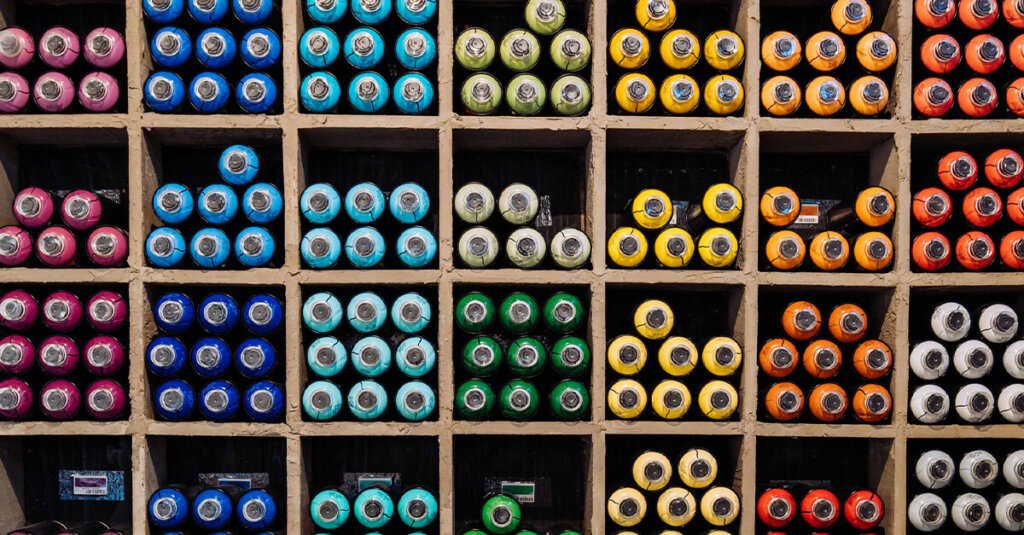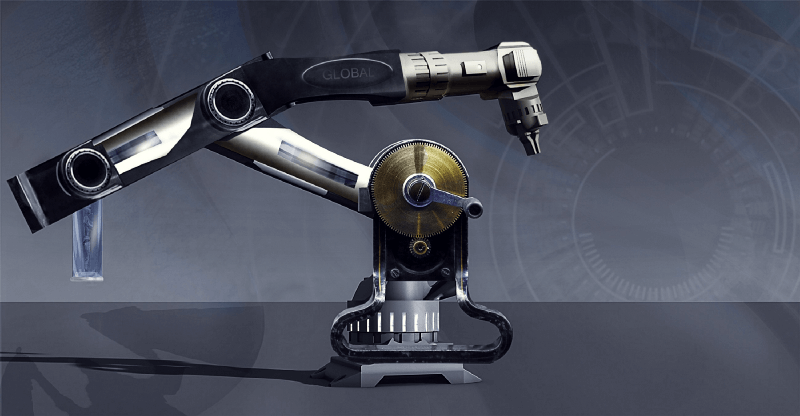
How a user acquisition team can save 500 hours a month with automation
The inevitable automation of the mobile app marketing space is an existential threat for a company in the app economy to understand and embrace.
With Facebook and Google taking on the heavy lifting, it’s becoming clear that a company spending a significant sum of money doesn’t need a large marketing team. Some user acquisition managers might call automation “boring or commoditized”. However, boring and commoditized is exactly what a leader in the business should want. Perfecting “the boring stuff” is how companies win.
It’s been 4 years since Google launched Universal App Campaigns. This was a bold and contentious move that consolidated disparate pieces of Google’s advertising business: Google Search, Play, Display, and YouTube. The result was a unified, automated user acquisition platform for mobile apps. This was a significant change for mobile growth teams who overnight lost the levers previously available to them to manage their mobile app campaigns. Facebook quickly followed suit, releasing its machine-learning driven Value Optimization and App Event Optimization offerings and more recently their campaign budget optimization product (CBO). It’s expected that sometime this year, Facebook will release its UAC clone. Given Facebook and Google’s market share, automated machine learning systems will be delivering 70%+ of the spend we see coming from global mobile advertisers by the end of 2020.
Forward-thinking organizations are planning for this ongoing disruption. A good starting point is to list the current tasks that mobile app marketing teams undertake. Below is a non-exhaustive list:
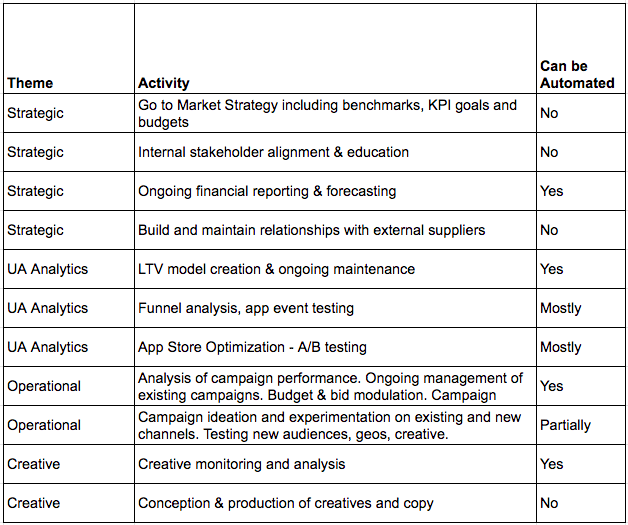
While analyzing the various activities of a UA team it quickly becomes apparent that much of the work can and should be automated. Most analytics and data science tasks should by definition be automated, where possible leaving the stakeholder with the task of repackaging these insights to communicate internally and build alignment.
Operationally, it’s already possible to automate the ongoing exploitation of existing campaigns. With LTV and Market models, one can effectively optimize long-term ROAS. Algorithmic Market models understand the relationship between CPI, CVR, and CPM as bids and budgets are adjusted based on performance. With these models, one can predict the future ROAS of an individual campaign. A portfolio optimization approach combined with automation across all campaigns allows marketers to hit a defined KPI such as d180 payback or max d365 spend. Then, the marketing team’s KPIs and planning are more aligned with those of the over-all business.
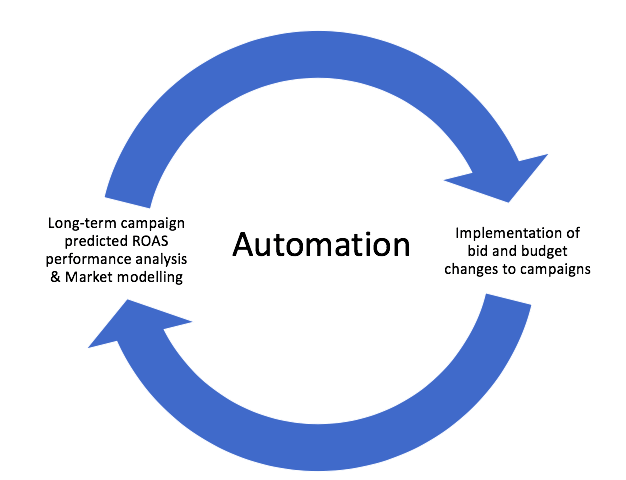
Campaign ideation and experimentation requires knowledge of future performance outside the current live campaign structure. By leveraging priors and organic data, an automated system can suggest new campaigns for audiences and geo’s respectively. For new channels, comparables can be used from other similar channels.
Automation of a creative testing framework should be a solved problem within the next couple of years by the industry writ large. A formulaic, widely accepted approach to testing creative is inevitable. At this time, both Facebook and Google offer little in the form of creative testing features but they’re both well aware this is the last piece of the UA puzzle they need to automate. Rumors swirl that Google is working on a creative automation platform that’s soon to launch, but there exists a significant opportunity for app companies and tool providers to build cross ad platform features.
So how much time does this automation save?
It’s important to understand that automation for the sake of automation does not lead to optimal outcomes. Automation should deliver both efficacy (producing the results you want) and efficiency (do something well without a waste of time or money). If it doesn’t deliver on at least one of these promises then it’s not worth the time or capital investment. However if done correctly, the automation of activities within the user acquisition function can save a significant amount of time.
Let’s look at the percentage of time a user acquisition team might spend on each of these activities on a monthly basis:
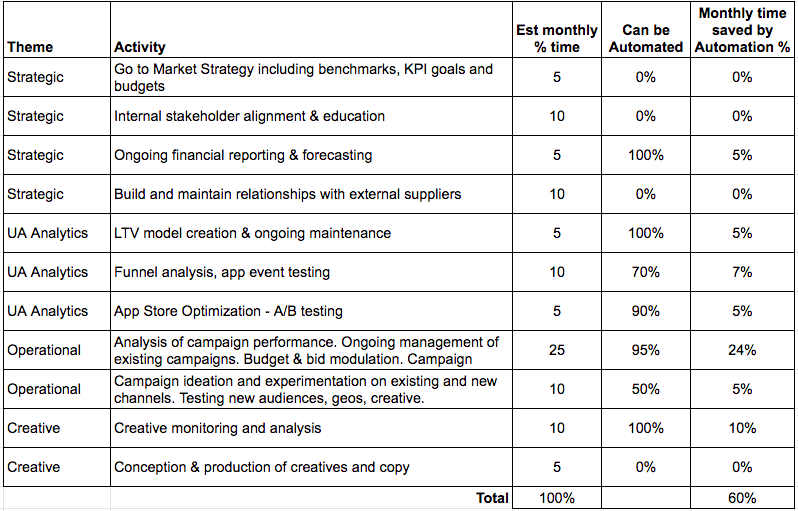
For a 5 person user acquisition team working a 40 hour week, automation can save up to 500 hours a month. Unlocking these savings requires a blend of build and buy strategies that will be explored in a later post.
https://www.algolift.com/#contact
Image by TPHeinz from Pixabay

